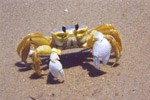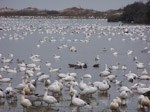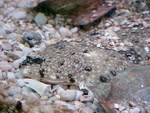
NPS Photo 
Kim Check 
John Collins 
NPS Photo Finally, the coastal waters that surround Assateague Island teem with animal life. The sheltered, nutrient rich waters of the estuary formed by the island provide ideal breeding and spawning habitat for many aquatic species, some of which, like the blue crab (Callinectes sapidus ), are commercially important to the local area. Each spring a variety of fish, including spot (Leiostomus xanthrurus), Atlantic menhaden (Brevoortia tyrannus) and summer flounder (Paralichthys dentatus) migrate into the estuary to breed. Later, the juvenile fish provide an abundant food source for birds, marine mammals, and larger fish. |
Last updated: June 9, 2021
